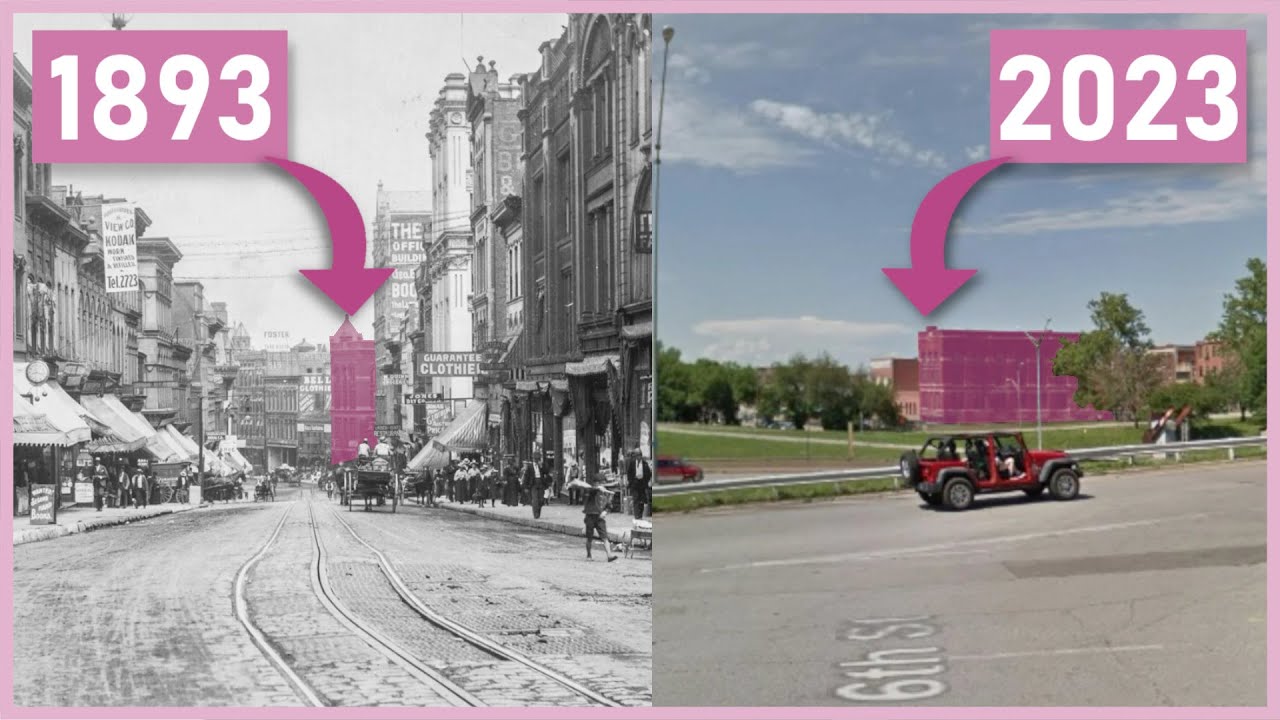The financial unsustainability of traditional, car-centric American suburbs, consisting mainly of single-family units, is a critical aspect of the problem of urban sprawl. The design of these suburbs necessitates constant expansion into undeveloped land. This is because the initial infrastructure costs, such as roads, utilities, and public services, are often subsidized by development fees and future property taxes from new construction. However, as these communities age, the costs of maintaining and replacing this infrastructure can significantly exceed the revenue from property taxes, creating a financial shortfall. This is often referred to as a “growth Ponzi scheme” – new development brings in a temporary influx of revenue, which is used to pay for the cost of existing liabilities, but in the process, incurs even more long-term liabilities.
Moreover, the dispersed, low-density nature of these suburbs compounds the issue, leading to inefficient public service delivery and increased per capita costs. The reliance on private vehicles, due to large distances between residences, workplaces, and essential amenities, also places a heavy financial burden on families, particularly those in lower income brackets. Affordable housing options are limited, contributing to socio-economic segregation. Furthermore, the conversion of natural and agricultural land into residential and commercial areas can lead to losses in ecosystem services, the costs of which are often not accounted for. Thus, from both a municipal and a resident perspective, traditional American suburbs present a financially unsustainable model for urban development.
The suburb model is an easy way to give people more land, but it is highly, highly inefficient.
It’s not really a ponzi scheme… it’s a desire for affluence and social exclusion from people who are different than you.
People love conformity, hence why every new development is in a HOA.
Its kind of both, the growth pattern is not sustainable in any metric. Focusing only on the now without caring for the future upkeep is very shortsighted development
It is a ponzi because at the end, tax revenues will not fund all the infra that was put in place. So property owners and local budgets in these areas either will need a bailout or their infra will degrade to where it won’t be usable. Note this is already happening in places like Wisconsin and Michagan, among others.
If your state aint growing, infra looks bad
I’ll have to watch this later. At first I thought it was from the Not Just Bikes channel, which has a similar message.
This youtuber is friends with NJB :)
This is all true, but doesn’t offer much of a solution or any alternatives. If I think about the concept of essentially living in a megabuilding from cyberpunk, I wouldn’t trust my fellow man to be clean enough to keep it from looking like the mega buildings from cyberpunk. Plus, cramming people into close quarters accelerates the transmission of disease, which would be problematic given how unclean I would expect such a place to be. It’s not that I disagree with these statements, urban sprawl is a problem.
The concept you’re looking for is called the ‘missing middle’. People assume the only two options are single family home suburbs or inner city mega apartments.
What’s missing are small mixed areas (which are illegal to build in most of the US) that have single family homes, duplexes, small apartment buildings, all mixed in with commercial spaces like grocery stores and restaurants.
The solution is known and has been implemented before the Robert Moses era (suburbs residence with down town offices): it’s triplexes, building with 1 or 2 large unit (families)+ 2-4 smaller units (configurations are highly flexible and can quickly adapt to demographic changes).
I have the chance to live in a neighborhood that existed before the car revolution. It’s simple, you need narrow 3 story buildings( with a small backyard and almost no frontyard nor parking lots (parking on the street only) and a commercial street every 4-5 street.
I’m in Montreal which is in North America and thus public transport is always underfunded and transportation budget is almost completely dedicated to single passengers trips living in suburbs (rant: old neighborhood have been getting almost no new infrastructure for decades because it just works and they took away trams while they spend billions trying to fix highway congestion). Even in that climate most residents in Montreal’s pre 50s neighborhoods don’t own cars (I have one child and I don’t own one) and almost no one owns two. It’s not because they can’t afford it, these neighborhood are considered prime locations and it would be cheaper for me to move in the suburbs and have one car (I was born in the suburbs and I wouldn’t force that on my kid). Most use the subway/bus or bike to downtown offices, many work in the neighborhood and walk or bike to work. For shopping I have a commercial street with everything I need (daycare, large grocery store, butcher, bakeries, fishmonger, pharmacies, libraries, hardware store, general household, clothing boutiques, toy store, kid candy store, adult candy store…) offered by many small independently own shops (much better for the local economy than one single Walmart) all in walkable distance (this not a new trend, my commercial street have been around for at least 50 years). For leisure, I have access to 5 parks, 2 public libraries, public pool, in summer time they close the street to car traffic and we have bouncy houses and wrestling matches in front of our fruit and vegetables store… For anything else I just use the subway to downtown.
I’ll rent a car 2-4 time a year for vacations and long trips and I’ll use our local car sharing service (Communauto) once every two weeks for stuff like furniture, landscaping materials …
I have been bragging a lot but, tldr, human friendly urban living is a solved problemt: it’s triplexes.
deleted by creator
Yeah, because remote suburbs are just perfect for disabled people with mobility issues. 👍
There’s no way you are not a troll lmao
Much emotion, low education
(((Inner city crime))) (((wealthy cosmopolitan elites)))
Usually, the multiple parenthesis are used to dog whistle “Jews”, but this guy was dog whistling “black people”.
I’m not sure if there’s a way to sarcastic indicate that form of stupidity…
Anyway, for those who don’t know, “white flight” to the suburbs started almost exactly the same time that segregation was ended. What a coincidence. Particularly the desegregation of schools.
Speaking of the desegregation of schools, the forced desegregation of certain white only universities was the start of the religious right in politics, not Roe v Wade, which was decided some 7 or so years earlier.
He was dogwhistling both I think, “the wealthy urban
eliteslandowners arepromoting racemixingtricking good people to move back into the crime filled cities” is pretty explicit even for this type
So much bullshit I don’t even know where to begin.
I suggest that anyone interested in this topic watches this playlist which goes into the economics (and much more) about why current American planning doesn’t work and is destroying the US:
https://youtu.be/y_SXXTBypIg?list=PLJp5q-R0lZ0_FCUbeVWK6OGLN69ehUTVa
deleted by creator
I’ll never understand how anyone could say cities are ableist in the slightest. Less cars means you’re more free to just go places, walking or otherwise, so it’s safer for people with vision or hearing disabilities. More public transit means it’s easier for everyone else to get places. If you can’t use your legs, you can’t drive anyway… Now you don’t have to. Plus public transit costs a lot less to the user to do because you don’t need to pay for a whole car and so on which is great for people with limited money options due to having a disability.
It’s really dumb to say public transit and walkable cities is capitalist stink given that there’s a really long recorded history of capitalist stinks trying to ban cities from being walkable… And it working… It’s a big reason American cities suck so bad now.
But everyone can’t drive. I just don’t see how cities=capitalism? What makes a suburb more socialist than a city?
The videos look at the facts and sources their claims, like actual budgets and where the money is coming from is shown.
If you aren’t willing to look at the facts then maybe you shouldn’t be talking about the subject?Cities where stuff is close together and there’s public transport is obviously better for disabled people than being stuck far away from everything and having to drive(which many people can’t) to do anything?





